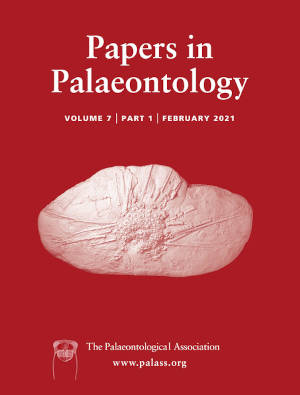Reg. Charity No. 1168330

The systematics of ammonoids are complicated by their large degree of intraspecies variation, which complicates a stable validation of species. Aegocrioceras is a heteromorph ammonite from the Lower Saxony Basin in the Hauterivian Boreal, and a prime example of a genus with an unstable internal systematic and external relationship to other ammonoids. Here, we use quantitative morphometrics on Aegocrioceras species from an assemblage collected in the Resse clay pit (north-west Germany) to evaluate the systematics and phylogeny of this Cretaceous genus. We simplify the systematics of the genus into the three entities A. bicarinatum [m]–A. semicinctum [M] complex (which potentially contains A. quadratum as well), A. raricostatum and A. spathi. The most likely phylogeny coincides very well with the stratigraphic record of the species and implies anagenetic adaptations in A. raricostatum and A. spathi after the origin of the species. It is most likely that Aegocrioceras derived from warm-water adapted Tethyan Crioceratites species, and Boreal Crioceratites are potentially warm-water adapted descendants of the cold-water adapted Aegocrioceras but may alternatively represent renewed Tethyan invasions. Our data imply that the success of Aegocrioceras against incumbent ammonites in the Boreal was rooted in abiotic change (Court Jester) processes due to its high adaptability, while it is more likely that selection within the Aegocrioceras clade was based on biotic interaction (Red Queen) processes.
We thank Christian Klug (Universität Zürich, Switzerland) for helpful comments on an earlier presentation of this study. We are grateful for comments by the two reviewers Kenneth De Baets (GeoZentrum Nordbayern, Germany) and Margaret Yacobucci (Bowling Green State University, USA), which helped to greatly improve this article. MFGW was supported by a PRIMUS (PRIMUS/20/SCI/019) and PROGRES Q45 grant; RH acknowledges the financial support by the Deutsche Forschungsgemeinschaft (DFG; grant number HO-4674/7-1).